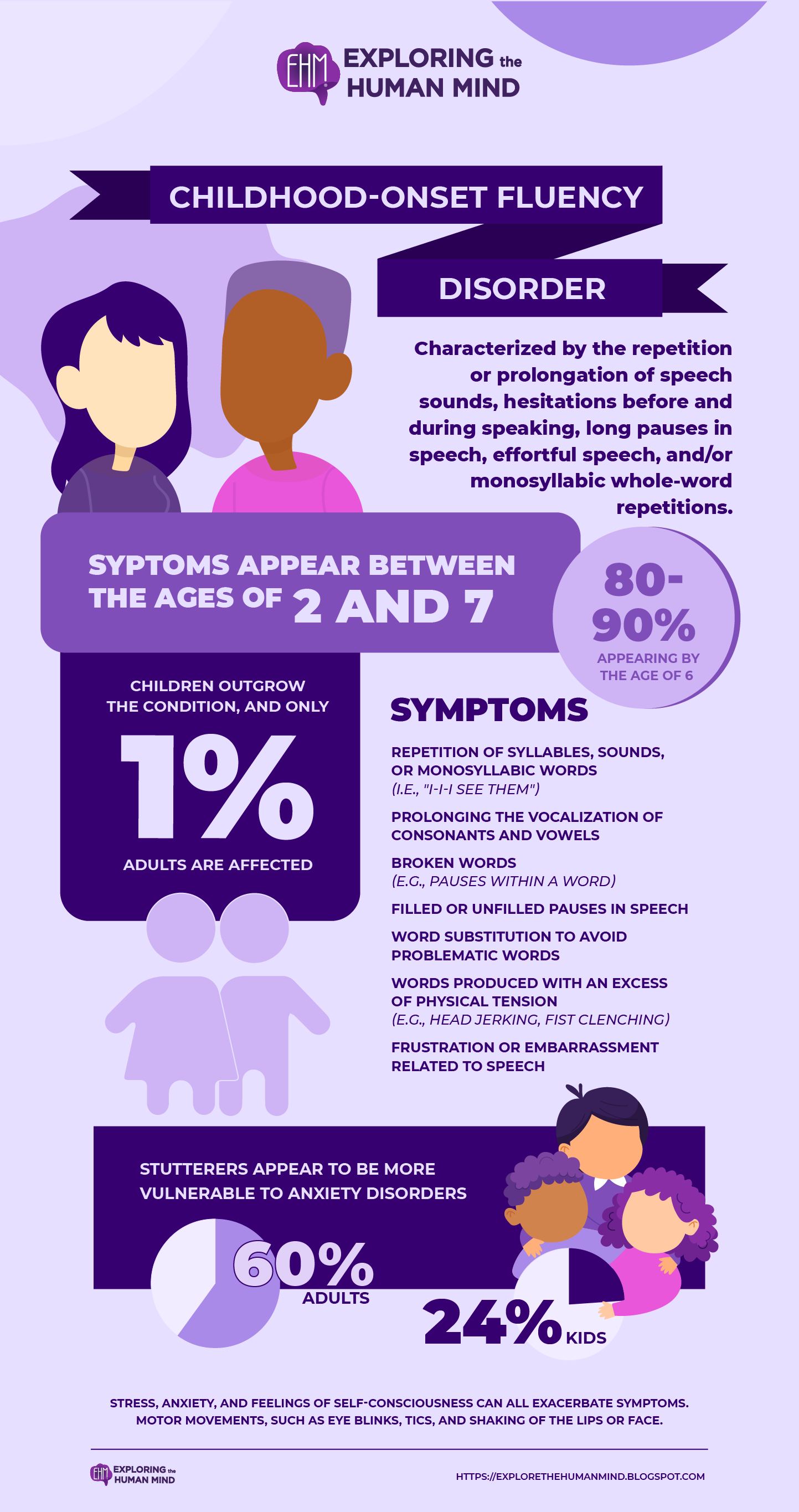Childhood-onset Fluency Disorder
A communication disorder characterized by a disruption in the flow and timing of speech that is inappropriate for an individual's age. This condition, also known as stuttering, is characterized by the repetition or prolongation of speech sounds, hesitations before and during speaking, long pauses in speech, effortful speech, and monosyllabic whole-word repetitions. This condition is typically accompanied by anxiety about speaking and can limit how comfortable a child feels participating in social or academic settings.

vectors by Freepick; graphic design by Vadot
Statistics
Symptoms of childhood-onset fluency disorder appear between the ages of 2 and 7, with 80 to 90% of cases appearing by the age of 6. While mild stuttering is common in children learning to speak, it becomes a fluency disorder when it persists and causes the child distress. Stuttering is more common in males than in females. According to research, 5 to 10% of preschoolers have childhood-onset fluency disorder. However, many children outgrow the condition, and only 1% of adults are affected.
Stutterers appear to be more vulnerable to anxiety disorders. According to research, between 22 and 60 percent of adults who stutter also meet the criteria for social anxiety disorder, and 24 percent of children who stutter meet the criteria for social anxiety disorder. Stuttering, on the other hand, should not be interpreted as a sign of anxiety.
According to the DSM-5, between 65 and 85 percent of children recover from childhood dysfluency. The severity of the disorder at age 8 can often predict whether it will resolve or persist into adulthood.
It occurs when a child's speech is influenced in ways that disrupt normal fluency and pattern of speech.
It can include:
- Interrupted speech (known as speech blocks)
- Prolonging sounds
- Repeating sounds or syllables
Anxiety or limitations in social, academic, or occupational functioning result from the disturbance. Although adult-onset fluency disorder can occur, the onset of this condition must occur during the early developmental period and not as a result of a medical or neurological condition.
Symptoms
- Repetition of syllables, sounds, or monosyllabic words (i.e., "I-I-I see them")
- Prolonging the vocalization of consonants and vowels
- Broken words (e.g., pauses within a word)
- Filled or unfilled pauses in speech
- Word substitution to avoid problematic words
- Words produced with an excess of physical tension (e.g., head jerking, fist clenching)
- Frustration or embarrassment related to speech
Symptoms may appear and disappear depending on the task at hand, according to the DSM-5. Symptoms may be absent during oral reading or singing but present during casual conversation with another person, for example. Stress, anxiety, and feelings of self-consciousness can all exacerbate symptoms. Motor movements, such as eye blinks, tics, and shaking of the lips or face, may accompany symptoms.
Reference:
https://www.facebook.com/verywell. (2022). What to Know About Different Types Communication Disorders. Verywell Mind. https://www.verywellmind.com/communication-disorder-types-5220602#toc-types-of-communication-disorders Childhood-Onset Fluency Disorder. (2018). Psychology Today. https://www.psychologytoday.com/intl/conditions/childhood-onset-fluency-disorder
Childhood-Onset Fluency Disorder. (2018). Psychology Today. https://www.psychologytoday.com/intl/conditions/childhood-onset-fluency-disorder






Comments
Post a Comment